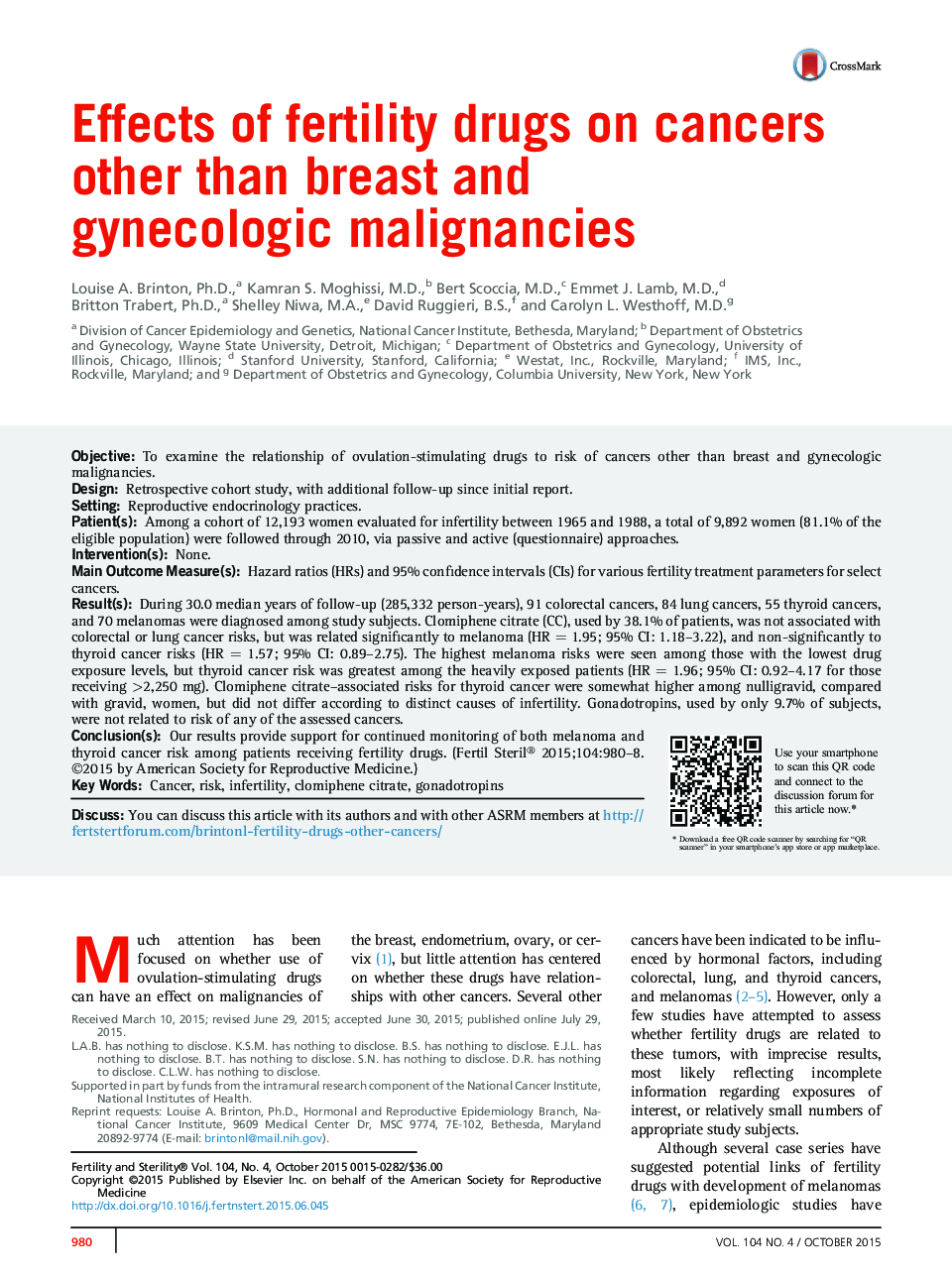| Article ID | Journal | Published Year | Pages | File Type |
|---|---|---|---|---|
| 3935815 | Fertility and Sterility | 2015 | 9 Pages |
ObjectiveTo examine the relationship of ovulation-stimulating drugs to risk of cancers other than breast and gynecologic malignancies.DesignRetrospective cohort study, with additional follow-up since initial report.SettingReproductive endocrinology practices.Patient(s)Among a cohort of 12,193 women evaluated for infertility between 1965 and 1988, a total of 9,892 women (81.1% of the eligible population) were followed through 2010, via passive and active (questionnaire) approaches.Intervention(s)None.Main Outcome Measure(s)Hazard ratios (HRs) and 95% confidence intervals (CIs) for various fertility treatment parameters for select cancers.Result(s)During 30.0 median years of follow-up (285,332 person-years), 91 colorectal cancers, 84 lung cancers, 55 thyroid cancers, and 70 melanomas were diagnosed among study subjects. Clomiphene citrate (CC), used by 38.1% of patients, was not associated with colorectal or lung cancer risks, but was related significantly to melanoma (HR = 1.95; 95% CI: 1.18–3.22), and non-significantly to thyroid cancer risks (HR = 1.57; 95% CI: 0.89–2.75). The highest melanoma risks were seen among those with the lowest drug exposure levels, but thyroid cancer risk was greatest among the heavily exposed patients (HR = 1.96; 95% CI: 0.92–4.17 for those receiving >2,250 mg). Clomiphene citrate–associated risks for thyroid cancer were somewhat higher among nulligravid, compared with gravid, women, but did not differ according to distinct causes of infertility. Gonadotropins, used by only 9.7% of subjects, were not related to risk of any of the assessed cancers.Conclusion(s)Our results provide support for continued monitoring of both melanoma and thyroid cancer risk among patients receiving fertility drugs.
